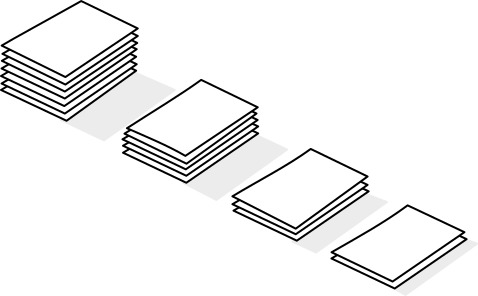Going Big Memorizing Large Pieces and Programs More Efficiently
The final post in this memorization series is about learning large chunks of music or big pieces/programs quickly and efficiently – without needing the printed music. If you have been following the last few posts on the topic and trying them out, this post should feel like a logical extension.

Large pieces of music or big programs often feel just a little out of reach when we perform. There is a feeling of, “If I only had a little more time to prepare, this could have been really special.” Part of this is simply learning how to pace our practice and time management so we are ready at the performance. But adjusting our preparation can actually create hours that weren’t there before.
The first step in this process is to get your ears involved early and often… This way not everything falls on your ability to “memorize” a large volume of music or muscle memory. When you are practicing (with or without the music) record yourself. Listen to the recording when you’re away from the instrument. As you’re in the car, walking around or working out be listening to your recording so you know how you sound and can start to anticipate the sections and sounds of the piece when you do get to the instrument. The bonus of recording yourself is that it is often more stressful than performing. The experience of recording helps our performance chops significantly.
An extension of this is to make playlists on streaming services or your music-player library and listen to several versions of the piece or program throughout the day. Be able to sing along with all of the recordings as if you’re rocking out to your favorite pop song on the radio. If you’ve been taught to never listen to other versions of a piece, I can’t even express how wrong I think this is. There is something to learn from every great artist… Soak in all you can. I promise you won’t become a copycat and you will still sound unique. I’ve seen this make students and myself more unique as a performer – not less unique.
These previous two suggestions are what we can do away from the instrument. We are essentially practicing without taking up our practice time at the instrument. For some students I’ve worked with, one hour of listening is worth several hours of practicing.
When we do sit at our instrument, we can still use the playlists and recordings. One of the best techniques I’ve discovered is to start one of the recordings on your playlist from random spots in the recording. So if you’re playing a piece, randomly start the recording at :48 seconds into the recording. As soon as you hear where the recording is in the piece, jump in and start to play along. Once you match with the recording and play for few phrases, stop the recording and have it jump to another place in the track. Repeat this process several times from different places in the recording. The goal is to see how fast you can jump in with the recording and keep going. Every once and a while, start from the beginning and try to play with the recording all the way to the end. Even if it’s too fast or different than you want to play it… It helps build memorization and it forces you to be flexible in your knowledge. As a bonus, it keeps you from relying too much on muscle memory.
All of this should be done without the printed music in case that wasn’t clear.
If you’re a teacher, teach entire lessons without the score being opened by the student or you. Even if you or the student isn’t ready for that because the pieces aren’t that far along, do it anyway. Be uncomfortable and learn to work through the piece without the score. The way that you communicate during these lessons will help “memorization”. Sometimes we have to pull the page away to really get to the essence of a piece. The things we focus on without the score are very different than what we do when we have the score. It’s fascinating but it also gets results.
This isn’t learning from wrote either. Simply do the lesson like you normally would except don’t open the score – work on the same things you would with the music open.
The final point is that playing without the music should be constant. We have to develop this ability and improve on it every day. We really should practice a fair amount of music each day without the score. Even if you sight read through a piece when you’re practicing, try closing the score the second time you play through it… Build up your chops. Over time, you’ll start to amazing yourself.
If you missed the previous posts in this series, click on the titles below to check them out…
